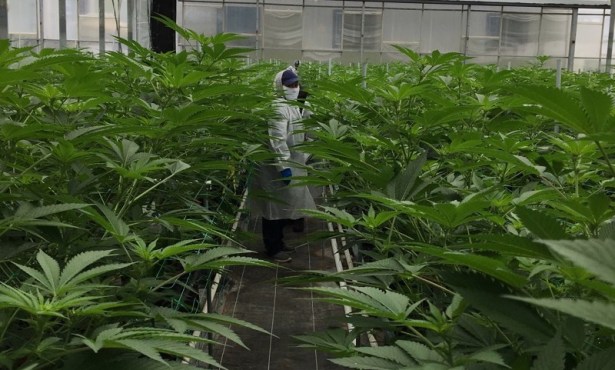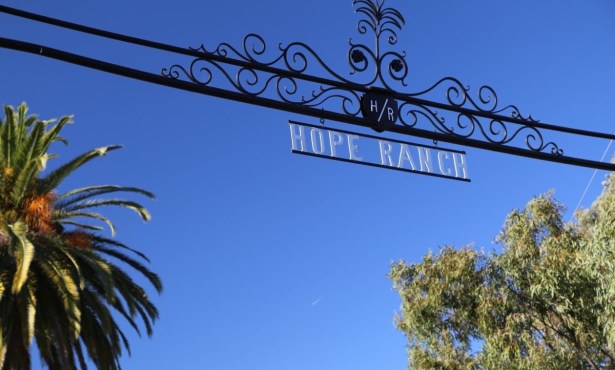Trump Budget Aims at the Deficit and Hits the Poor
Proposal Called 'Cruel' for Social Program Reductions

Budget director Mick Mulvaney sat before members of the House budget committee as they fired questions at him, including freshman Coungressmember Salud Carbajal of Santa Barbara. “There seems to be a hypocrisy,” Carbajal said, “to look for waste in domestic programs … but we gloss over ’em when it comes to increasing Department of Defense spending.” Mulvaney played defense, explaining the finer points of taking $72 billion from the Social Security disability insurance program and $1.3 trillion from Medicaid over the next 10 years. The drastic cuts — to programs Trump had campaigned on never cutting — all go to add $54 billion for the Pentagon. In Santa Barbara County, the losses to education, the arts, and the poor would affect thousands. The Budget Committee meeting on Tuesday was just the first of many in Congress, which is also dealing with the Russia investigations before cameras and Trumpcare behind the scenes.
Poverty program cuts would have an immediate effect in Santa Barbara County, said Fran Forman, head of the Community Action Commission (CAC). The elimination of community block grants means $500,000 lost toward 2-1-1 information services, and senior and youth services. Seniors living in poverty or who are disabled will have to choose between eating and buying medications, she said, with the loss of CAC’s Senior Lunch program. Head Start programs, which serve 1,300 children and their families in the county, are cut by 17 percent. “Being poor is tough,” Forman said. “It will get tougher.”
Among the bleeding are, as expected, climate-related satellite programs and scientific funding. The National Science Foundation, which the budget document acknowledges funds 24 percent of research at American colleges and universities, is targeted to lose 10.7 percent in 2018. Five earth science satellite programs are gone. The budget takes $6 billion from the National Institutes of Health, despite bipartisan support for the agency. The departments of State and Agriculture are the biggest losers after the much-targeted Environmental Protection Agency — down 31 percent for 2018. State and Ag will lose 29 and 20 percent of their budgets, respectively. The budget’s “2-Penny” approach advocates continuing to reduce all non-defense discretionary spending 2 percent each year until 2027 in an attempt to change the deficit to a surplus.
Not everything is program cuts, however. A new infrastructure program in the budget proposes $200 billion in federal funding to lure private investment in public roads, airports, waterways, ports, and even drinking water to the tune of $1 trillion. Air traffic control should be under a nonprofit, nongovernmental entity by 2021, the budget document states. Ivanka Trump’s parental leave program proposes six weeks paid leave for new mothers and fathers, to be financed by states via unemployment insurance “reforms” of $19 billion.
How the deficit goes down when Trump says he’ll be lowering taxes on individuals and businesses, too, remains a mystery that the budget attempts to bridge with optimism and what economists are calling a double-accounting error. Trump’s budget projects that economic growth of more than 3 percent from “fiscal, economic, and regulatory gains” will in itself raise $2 trillion over the decade, though it states that in recent years, average growth has been 1.3 percent. Peter Rupert at UCSB’s Economic Forecast suggests the Federal Reserve forecast is more mainstream at 1.8 percent over the long run.
The math mistake — widely reported after Jonathan Chait at New York magazine caught it — is in using the anticipated $2 trillion economic gain twice. Trump officials stated the amount will offset tax decreases and have also counted it toward balancing the budget. White House budget director Mick Mulvaney told reporters on Monday it was the “most efficient way to look at it,” then clarified on Tuesday that they’d chosen to make Trump’s yet-to-be-announced tax proposal deficit neutral instead of an increase or decrease.
The “cruel” budget — a label affixed by Robert Reich, President Bill Clinton’s labor secretary — has already encountered stiff resistance from Democrats, whose votes Republicans might need to pass any budget bill, given some of their members’ reluctance to take away food stamps — set to lose $274 billion over the next 10 years — or agree to $38 billion in Farm Bill cuts over the decade. Fran Forman plans to resist, asking the community to join her “in advocating for children, teens, families, and seniors living in poverty in Santa Barbara County.”
During the budget director’s appearance before the House budget committee, Carbajal had reached the end of his five minutes of questioning when he demanded Mulvaney explain how cutting 31 percent from the EPA clean water and air programs would affect American health. Committee Chair Diane Black (R-TN-6th District) directed Mulvaney to answer in writing. After the hearing, Carbajal called the budget “devastating” and “misguided.” He emphasized that “approximately $1.4 trillion will be taken from important programs, all to give to the richest individuals in this country and corporations.” On next steps, Carbajal said he hoped enough of the Republican leadership found Trump’s budget unrealistic that “we find common ground on a reasonable budget.”



